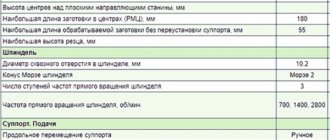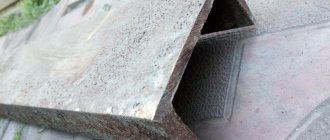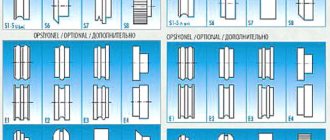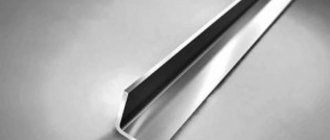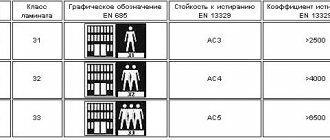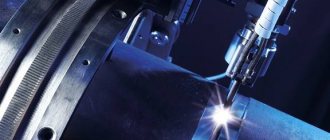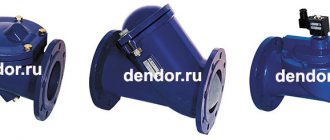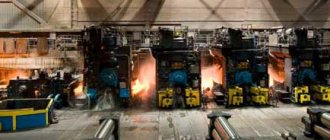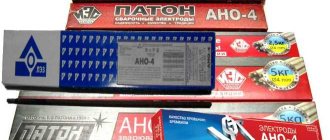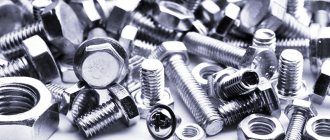In production areas, loading or unloading operations, transportation of fine and bulk materials is carried out using screw conveyors, they are also called screw conveyors. This equipment has proven itself to be trouble-free and reliable.
A screw conveyor is a continuous device, which is an open or closed chute within which a screw rotates. The auger is driven by an electric motor. Blades are used to move materials downhill or horizontally. It depends on the type of conveyor. Due to their versatility, such conveyors are widely used in industry.
Scope of application of screw conveyors
- Screw conveyors are often used in the food industry, such as bakeries, elevators, flour mills, enterprises that produce various types of cereals, pasta, breakfast cereal mixtures.
- Screw conveyors are used in the production of building materials, construction dry mixtures, in mining and engineering, as well as chemical enterprises. Wherever you need to move sand, sawdust, coal, and other bulk materials.
- In agriculture, these units are necessary for moving material intended for sowing and harvesting grain, transporting dry fertilizers, feed and mixtures for feeding birds and animals.
Homemade screw conveyor (auger).
Homemade screw conveyor (auger). There are approximately 13 types of continuous mechanical conveyors, including screw and belt conveyors, which are often used in agriculture. Making a conveyor belt yourself is not a problem, if you have the desire. You can also make a screw conveyor if you find a screw in scrap materials. It is impossible to manufacture an entire screw conveyor in the mechanical workshops of agricultural enterprises without the appropriate technology and equipment. At the factory, screw conveyors are made from cold-rolled steel belt. I remember how they made augers at the Institute of Organic Fertilizers 20 years ago. First, a template was made for bending the coil, the coil was turned on a lathe, cut along the radius, heated with a propane torch, and the coil was bludgeoned furiously with a sledgehammer. The result was a piece of metal, somewhat reminiscent of a turn of a screw. The quality of the screw was disgusting. Afterwards, the turns were welded to each other and pulled along the shaft using a special plate and a winch. This could not have happened without a sledgehammer. The quality became a little better, however, even with this method it was possible to stick a finger between the coil and the shaft. I was able to develop a device for making auger screws. The quality of the manufactured augers has become ideal. During production, it is impossible to even insert a match between the turn and the auger shaft. In short, this is how an auger screw is made. The turns are turned on a lathe, then they are cut along the radius and stretched one at a time using a special device, and then welded onto the auger screw shaft. Everything else in the auger is easy to do. Of course, screws have known disadvantages, but compared to other conveyors they are simpler. In addition, when producing potting soils, they are excellent mixers. And if you add a crusher to the auger, the soil quality will be ideal without the use of special mixers. Factory augers of small diameters are produced with a belt drive, while large diameters are produced with geared motors. Augers with geared motors often fail due to the fact that foreign solid inclusions (stones, snags, etc.) jam the auger. The electric motor begins to operate in short circuit mode and fails. I make screws with a diameter of 200 mm with a belt drive. If a stone or snag jams the auger, the electric motor continues to rotate - the drive pulley slips. In order for it to slip, it must be adjusted accordingly. The screw conveyor is universal. Option 1. The screw conveyor is designed for loading soils of varying moisture content, organic fertilizers, including vermicompost, as well as mineral fertilizers and other materials that do not contain solid inclusions (stones, metal objects, wood residues) into the bunker of the packaging installation . A screw conveyor consists of a frame, casing, screw, hopper, belt drive, and electric drive. The conveyor can be used in rooms with positive and negative air temperatures. A screw conveyor can be manufactured in mechanical workshops of agricultural enterprises. Main technical characteristics. 1. Type - stationary (it is possible to make a mobile one). 2. Feed - 2 cubic meters / hour. 3. Installed power - 1.5 kW. 4. Electric motor 4A 100 L8 U3 - 1 piece. 5. The diameter of the auger screw is 190 mm. 6. Auger screw pitch - 110 mm. 7. Number of service personnel 1 person. Mechanical engineer V.I. Kosterin.
Varieties
There are different types of screw . They are of a closed type (pipe) or open type (gutter), and can also differ in their length or pipe diameter. They differ in the way the screw rotates, stationary and movable in the direction of rotation, low-speed and high-speed. To correctly select the right type of screw conveyor, you should take into account what materials will need to be moved, the direction, the productivity of the equipment, the distance over which it is planned to move the materials and what will serve as the receiving tray, how the materials will be loaded.
With the help of inclined units, you can save space; compared to horizontal screw conveyors with the same length, inclined conveyors take up much less space. Mobile screw conveyors have a collapsible design, they can be disassembled and transported to another place of work. All parts of the screw unit consist of separate parts, all these parts are connected to each other by flange connections. This allows you to change the length of the conveyor. The use of screw conveyors made of stainless steel in the food industry eliminates the possibility of oxidation of food products.
Closed conveyor
- A closed-type screw unit consists of a sealed pipe in which a screw is mounted. This auger rotates using an electric motor. Such augers can be solid, shaped or belt, it all depends on the type of blades. The blades determine the performance of the conveyor and the type of material to be moved by this equipment. At the end of the device, in its upper part, there is a receiving tray into which bulk materials are thrown. For safety reasons, such a tray must be equipped with a lid. Below at the other end of the conveyor there is another hole, this is the unloading pipe, and it is equipped with a valve. Holes that serve for filling bulk materials can be located at any distance of the conveyor pipe.
- Enclosed screw conveyors are waterproof as well as airtight and are therefore well suited for transporting dusty materials. They can be used both indoors and outdoors. Such equipment has high productivity and speed of movement of materials. The downside is the complexity of maintenance and repair work, because all the main mechanisms are hidden in the pipe.
Open screw conveyor
An open-type screw conveyor consists of a chute or half a pipe; a screw rotates inside the structure. There are also models of open conveyors in the form of a rectangular container. The screw blades of open conveyors, like closed ones, can be solid, shaped or belt; the screw is also driven by an electric motor. Such a conveyor is primarily suitable for indoor use in order to prevent the penetration of moisture, dust or debris into the materials being moved.
Using an open conveyor, it is recommended to move materials that are odorless and will not fly away or create dust during transportation. Unlike closed conveyors, open ones are easy to repair and maintain; all working parts are in a visible place.
Screw design
The operating principle of augers is based on the use of a rotating screw, the spiral part of which is capable of moving material located in the cavities between the body and the screw feather of the auger. This technological scheme is compact and has a high efficiency, which makes screws economical equipment. The simple design allows us to produce specialized models of screws for any production conditions and materials.
There are two kinematic schemes for the operation of a screw conveyor: pulling - when the drive is located on the unloading side, and pushing - when rotation is transmitted to the screw from the loading neck. Each scheme has its own application cases, and is largely determined by the physical properties of the material, the type of screw used and the ability to maintain the drive.
| Rice. 1. Main dimensions of the auger. |
The auger body usually consists of separate sections connected by bolts. For most screws, it has the shape of a cylinder, at the ends of which there are flanges for connecting sections to each other or installing end walls with sealing and bearing units. The body is made of carbon and stainless steels. Eyelets or eye bolts are installed on the outer surface of the auger body for slinging and fastening the product.
Loading and unloading of material is carried out through the corresponding pipes, the number of which is determined by the characteristics of operation. The shape, dimensions and design of the pipes are agreed upon with the Customer. An inspection hatch is located under the loading pipe to clean the auger if it is clogged. A flange is welded to the end of the pipe, which is necessary for a rigid connection of the auger with the valves and other elements of the transport chain. To supply fibrous and low-moving materials, the loading neck is made in the form of a hopper, into which a agitator and/or a product presence sensor is installed.
The main element of any screw conveyor is the feed screw (auger). The shape and design of the feed screw largely depends on the physical properties of the feed material.
A solid screw consists of a pipe with a feather welded in a spiral, the edge of which forms a small gap with the inner wall of the screw body. The screw is subject to mandatory balancing to avoid unwanted vibrations and noise during operation. The pitch of the helical line of the spiral screw is not constant along its length: in the loading zone the step is made smaller than in the main transport zone. A solid screw screw is used to transport materials with high mobility.
The tape screw consists of a pipe on which a wide tape is mounted through intermediate ribs. A feed screw of this design is used:
1) for supplying viscous, thick powders or binding materials that may stick to the screw at the shaft connection;
2) for feeding lump materials such as limestone and gravel;
3) for fast dosing conveyors when good extraction is required.
By installing another belt of a smaller diameter on the shaft of the belt auger, having a pitch with negative thrust, a mixing auger can be obtained.
Belt screws without a central axis are used to transport complex, heterogeneous, viscous or piece products. They can have fastenings at both ends or only on one side, with the end of the belt screw blade sliding along the bottom of the screw conveyor housing.
Blade screws are used on augers, which, in addition to transportation, must pre-mix the product. Often screws of this shape are used to create multi-shaft transport systems.
For materials with poor mobility and high caking, feed screws with a special feather shape can be used.
To transport highly abrasive materials, the edge of the auger feather is strengthened by applying a special wear-resistant coating.
Screw conveyors are often used for volumetric dosing of bulk materials. The main problem with such operation is the difficulty in achieving accurate dosing caused by the undulation of the material supply. To increase the uniformity of product supply, a special device is installed at the discharge end of the screw - a dosing screw, which has a multi-start spiral with a small pitch.
| Rice. 2. blade auger. |
| Rice. 3. Auger dosing screw. |
When working with liquid or highly mobile products, as well as when using screws inclined towards unloading, a siphoning effect is often observed, that is, the outflow of the product when the screw is stopped. To reduce this effect, a special device is used, which is mounted on the shaft of the screw conveyor at the end of the screw feather in front of the outlet pipe.
To ensure the tightness of the screw and prevent particles of the supplied product from entering the bearing units, the feed screw shaft has reliable seals. In order to reduce the likelihood of bearing failure in the event of catastrophic wear of the seals, the bearing and sealing units are implemented in different housings. The shaft seals are manually adjustable and are available on special order with a pneumatic purge system.
Long augers require the installation of intermediate bearing supports (for more information on intermediate supports, see the Spare parts section). These supports are installed inside the auger to support the central axis of the feed screw and transmit torque. The plain bearing is made of bronze or other copper-based alloys. Intermediate screw supports for the food industry are manufactured with self-lubricating, and unlike others, do not require maintenance. Replacement of failed intermediate supports is carried out through inspection hatches located under each support.
The rotation of the screw is usually carried out through a compact two-stage helical gearbox. The gearbox is connected to the auger with a reliable splined connection and a keyed connection to the electric motor. The gear ratio is selected depending on the required rotation speed and productivity of the screw conveyor. When the auger is turned on, a large torque occurs on the output shaft of the gearbox, which can cause gearbox failure. A specially designed safety clutch makes it possible to secure the auger drive in such cases. In addition to gear reducers, a chain or belt drive can be used as a reduction gear.
Electric auger motors are flanged and are designed for operation at temperatures from -25° to +40°C. At the Customer's request, it is possible to install a two-speed electric motor. The engine power is determined based on information about the transported material, the geometric parameters of the auger, the characteristics of the gearbox and the required performance.
see also Screw conveyors when organizing cascades
| What is your name? (FULL NAME.): * | |
| Company name: * | |
| Your contact phone number: * | |
| Your email address (E-mail): | |
| Note: | |
| * Fields are required | |

